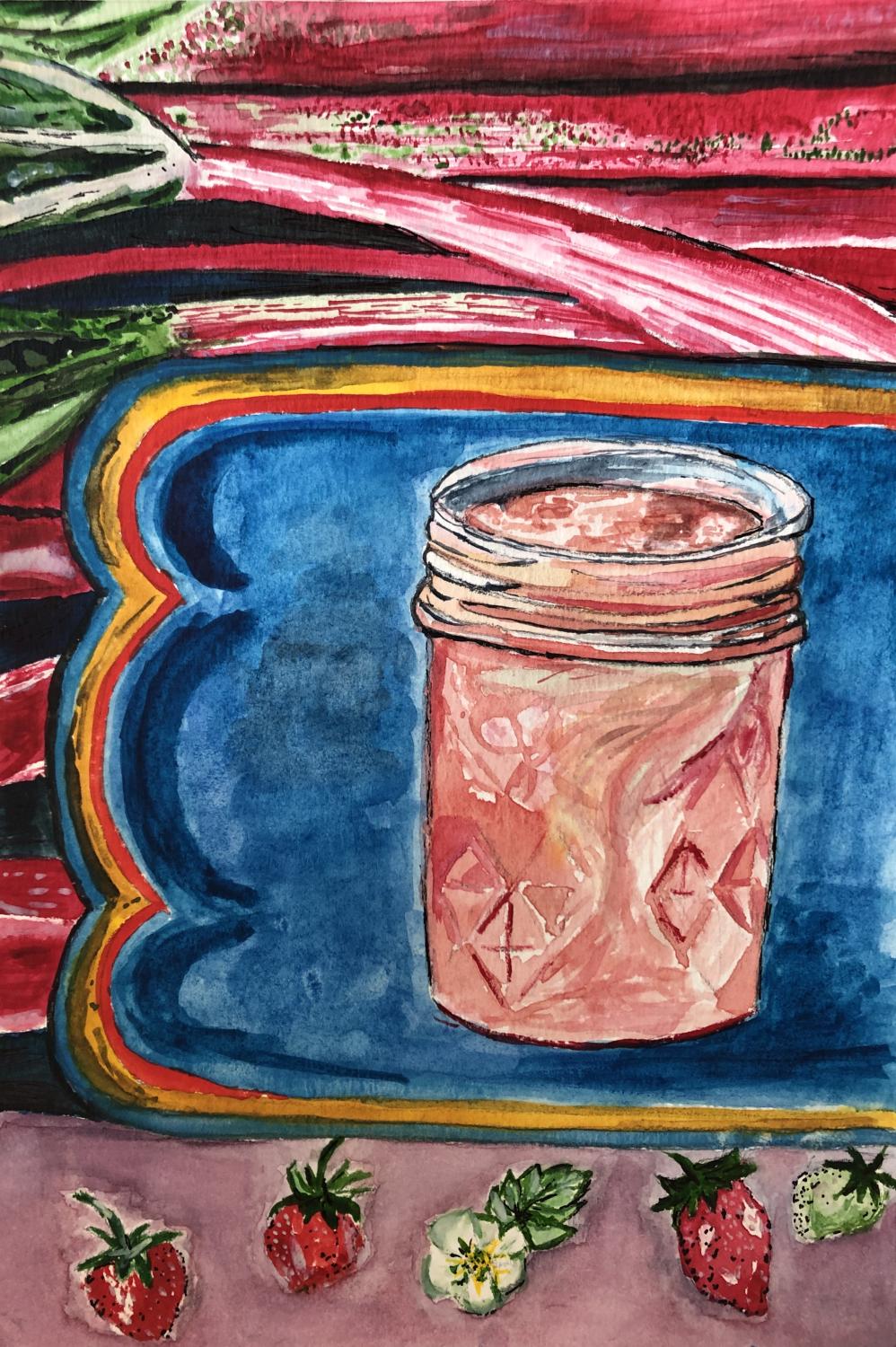This is a great way to preserve rhubarb for the months ahead, and also to use up any other berries you may have to hand – in this instance, strawberries. I also added in a handful of de-stoned cherries to make up the 200g of berries and they tasted delicious, so feel free to experiment. Raspberries and blackberries would also work well.
I used the kind of preserving sugar which doesn’t contain pectin, which created a deliciously spreadable rhubarb jam. The jam also actually sets a bit further as it ages.
(If you’re wondering why I painted it instead of photographing it this week, we ate and gave away all the jam before I decided to write it up for the blog, and I’m waiting to get my hands on some more rhubarb for another batch! So in the meantime my sketch is having to stand in.)
Practical tip: Make sure you sterilise your jam jars beforehand, and store the jam in a cool, dry place. It will keep for up to one year if stored correctly. Once opened, store in the fridge.
Equipment: for bottling the jam, you will need wax paper jam cover discs, cellophane jam pot covers (or an airtight alternative of your choice), elastic bands to secure, and sterilised jam jars.
Makes approximately 8 -9 medium sized jars. (I used recycled Bonne Maman jars which are 370g each, but use whatever you have to hand.)

